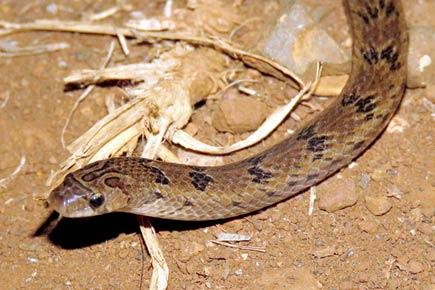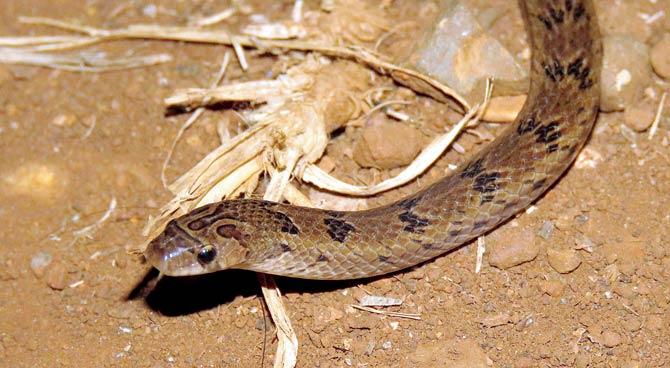Lack of ecological education is pushing many species to the brink of extinction

 I’ve been out gallivanting in the Eastern Himalayas of Arunachal Pradesh and Assam for the last 10 days. I have experienced and escaped every possible element of nature from cyclonic rain, gale-speed winds, lightening, thunderstorms to even a mild earthquake. Then, there were the leeches, ticks, mosquitoes and falling trees. The only elements we didn’t encounter were herds of wild elephants or the venomous King Cobra, Krait and various species of Pit Vipers. But, when we passed through Medo in Arunachal Pradesh, it dawned on us that the Medo Pit Viper was named after this very sleepy village.
I’ve been out gallivanting in the Eastern Himalayas of Arunachal Pradesh and Assam for the last 10 days. I have experienced and escaped every possible element of nature from cyclonic rain, gale-speed winds, lightening, thunderstorms to even a mild earthquake. Then, there were the leeches, ticks, mosquitoes and falling trees. The only elements we didn’t encounter were herds of wild elephants or the venomous King Cobra, Krait and various species of Pit Vipers. But, when we passed through Medo in Arunachal Pradesh, it dawned on us that the Medo Pit Viper was named after this very sleepy village.

A Russell’s Kukri snake on its crepuscular hunt
ADVERTISEMENT
Obviously, I had to read more, and since access to the Internet was out of the question, the only choice was to sift through the available print literature. I browsed through the book, Snakes of India — The Field Guide, authored by Romulus Whitaker and Ashok Captain. I was intrigued to note that although named after the Medo Village, the snake was actually found near Gandhigram Village, in Changlang District, which is the easternmost Indian settlement, bordering Burma. Since this snake is nocturnal and hibernates in dead bamboos from November to May, we missed it during our visit.
I idly continued surfing the book and checking various facts about other snakes. Since I had photos of the Russell’s Kukri taken during a late-evening walk at Aarey Milk Colony, I started looking for more information.
I knew that the name Kukri Snakes, for members of the Genus Oligodon, was due to their sabre-shaped teeth, which resembled the curved Nepali blade, Kukri. But that their sharp, flattened, curved teeth were useful for slicing into reptilian and amphibian eggs was a revelation. Besides eggs, adult snakes feed on geckos, small lizards and, surprisingly, young Kukri snakes are known to consume insects, grubs and spiders.
Currently, five species of Oligodon (Kukri) snakes have been identified in various parts of India. But snake taxonomists (Ophiologists) believe that with more research, these highly adaptable and widespread snakes may eventually be broken up into many species. The Common Kukri snake (Oligodon arnensis) and Russell’s Kukri (Oligodon taeniolatus) are among the most widespread kukri snakes and are found all over India.
They are known to be more crepuscular and often seen during the rainy season, sliding slowly in search of their prey. Though most Kukri snakes dwell in the plains, in urban areas, Russell’s Kukri snakes live in the crevices of buildings and old walls. They have been known to climb walls up to 10 feet in search of geckos and mice.
Due to their proximity to human habitation, it’s not uncommon for rescuers to receive frantic calls from residents surrounding the forests of the Sanjay Gandhi National Park (SGNP) and Aarey Milk Colony, insisting that a baby Krait has entered their house. Due to the bands and occasional white markings on their bodies, the non-venomous Common and Russell’s Kukris often get mistaken for the venomous Common Krait.
Anyone who has seen these beautiful snakes would vouch that although named after a sharp and lethal weapon, they are fairly docile. Misidentification and uncontrolled urbanisation has pushed these sabre-toothed hunters to the brink of extinction. The only way to resurrect them would be through mass environmental and ecological education.
Write in to Anand at sproutsenvttrust@gmail.com
 Subscribe today by clicking the link and stay updated with the latest news!" Click here!
Subscribe today by clicking the link and stay updated with the latest news!" Click here!







